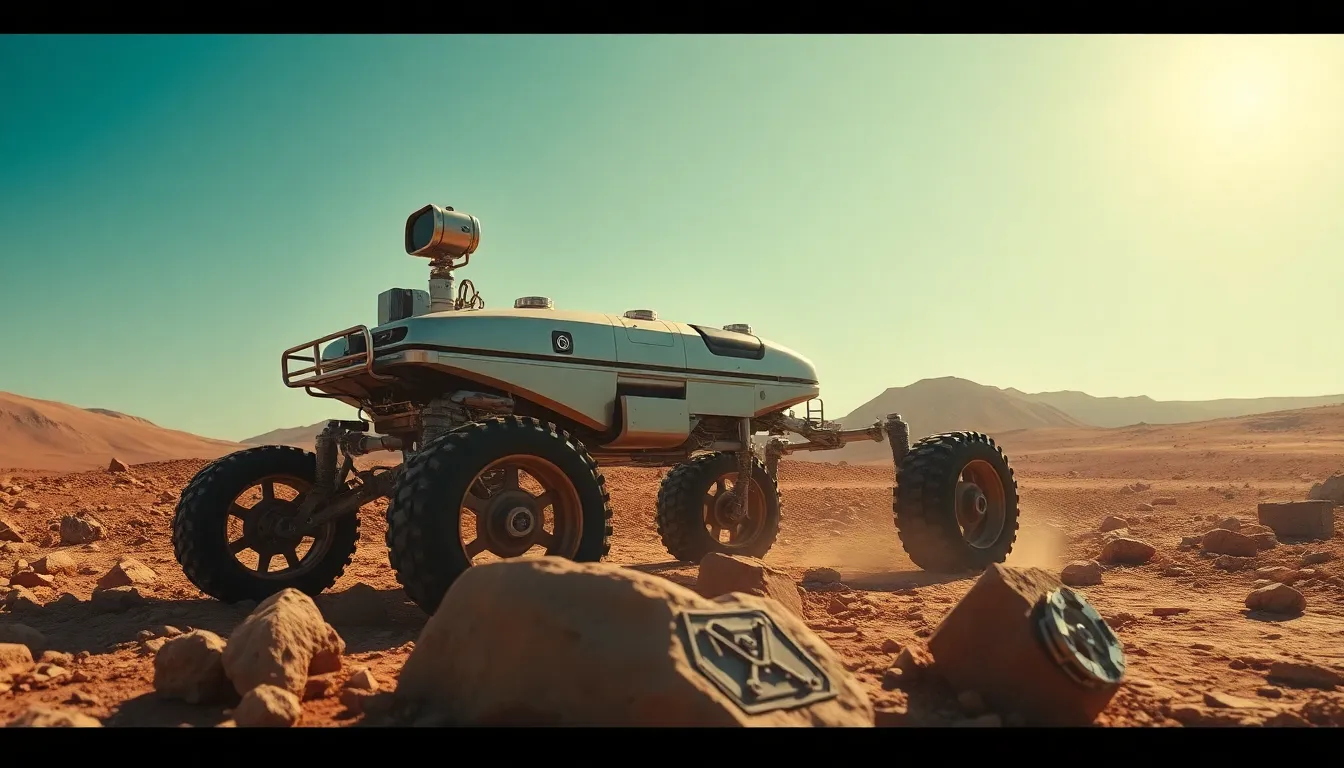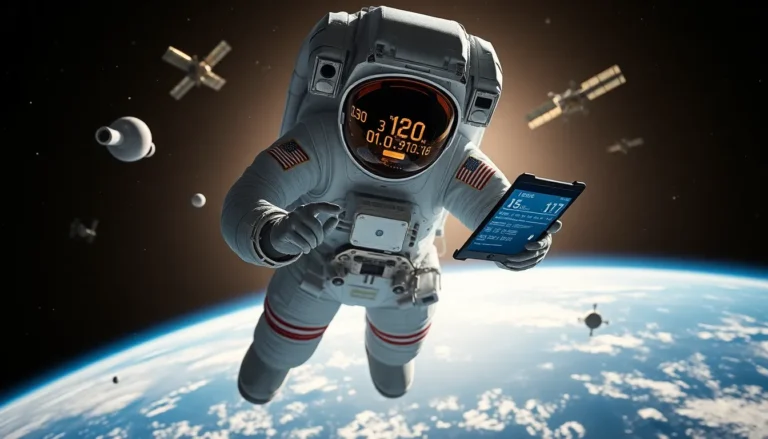When it comes to the final frontier, NASA isn’t just launching rockets; it’s blasting off with groundbreaking technology that shapes our everyday lives. From the gadgets we can’t live without to advancements that keep our planet safe, NASA’s innovations are like the cool kid in school—always ahead of the curve and occasionally causing a little envy.
Table of Contents
ToggleOverview of NASA Technology
NASA technology plays a pivotal role in various aspects of life on Earth. Innovations from NASA often lead to advancements in sectors such as telecommunications, transportation, and medicine. Satellite systems, for example, enable global communication and weather forecasting.
Many developments enhance public safety. The creation of fire-resistant materials for spacecraft has influenced firefighting gear used by professionals today. Similarly, advancements in air traffic control technology improve airport safety and efficiency.
Environmental monitoring tools developed by NASA also contribute to ecological awareness. Earth-observing satellites provide critical data about climate change and natural disasters. This information helps inform local and global responses.
NASA’s technology transfer program promotes the application of space innovations on Earth. Partnerships with private companies facilitate the adoption of advanced materials and engineering practices. As a result, various industries benefit from cutting-edge solutions.
Numerous medical advancements trace back to NASA research. Imaging technologies initially designed for space missions lead to improved medical diagnostics. Additionally, robotic surgery tools now use principles originally established for planetary exploration.
NASA’s ongoing commitment to research and development positions it at the forefront of technological innovation. Breakthroughs often result from collaborations between scientists, engineers, and industry leaders. Thus, NASA continues to inspire new generations to explore and innovate.
Key Innovations in NASA Technology

NASA consistently leads in technological advancements that impact life on Earth. Significant innovations include developments in spacecraft, rovers, satellites, and communication systems.
Spacecraft and Rovers
Innovative spacecraft enable in-depth exploration of our solar system. Mars rovers like Curiosity and Perseverance gather and analyze data on the Martian surface, furthering our understanding of planetary geology and potential for life. Each rover features cutting-edge technology in robotic navigation and autonomous decision-making. These missions aim to provide insights that fuel scientific exploration and discovery. Future spacecraft designs reflect the incorporation of advanced materials and propulsion systems, enhancing capabilities for long-duration missions.
Satellites and Communications
Satellites play a crucial role in global communication and data collection. NASA’s Earth observation satellites monitor climate patterns and natural disasters, helping scientists to understand environmental changes. Communication satellites facilitate critical connections for telecommunication services. Each satellite employs sophisticated technology for high-resolution imaging and data transmission, ensuring accurate information flow across the globe. Ongoing advancements in satellite design and deployment significantly improve response times during emergencies and natural disasters, demonstrating the importance of NASA’s contributions to global communications.
NASA Technologies in Earth Science
NASA’s technologies play a vital role in enhancing understanding of Earth and its systems. By focusing on environmental monitoring, these tools significantly contribute to Earth science.
Climate Monitoring and Research
NASA utilizes satellites to collect data on climate change, making significant contributions to climate monitoring and research. Instruments onboard satellites gather measurements on atmospheric conditions, ocean temperatures, and land use changes. Satellite data offers crucial insights into greenhouse gas emissions, aiding scientists in understanding the effects of climate change. Research efforts include long-term climate trends and the impact of human activity on natural ecosystems. Projects like the Moderate Resolution Imaging Spectroradiometer (MODIS) provide near-real-time data on vegetation and land surfaces, enabling researchers to analyze changes over time effectively. Continuous advancements in satellite technology expand these capabilities, improving climate models and predictions.
Disaster Response and Management
NASA’s technologies enhance disaster response and management efforts through precise data collection and analysis. Earth-observing satellites such as the Landsat series provide detailed views of disaster-affected areas. Rapid imaging capabilities allow teams to assess damage immediately after natural disasters like hurricanes and wildfires. Collaboration with agencies like FEMA ensures timely data dissemination to support response operations. Data visualization tools, including GIS applications, enable emergency planners to analyze vulnerabilities, aiding in efficient resource allocation. By using NASA’s insights, communities can devise effective strategies for disaster risk reduction and recovery efforts. This integration of technology into disaster management strengthens resilience against future events.
NASA Technology Transfers to Industry
NASA’s technology transfer program promotes the application of space innovations across various industries. The program actively collaborates with private companies, fostering advancements in medical imaging technologies and robotic surgery tools. Such partnerships lead to impactful changes in sectors like healthcare and telecommunications.
Innovations such as precision medical imaging stem from NASA’s initial developments in satellite technology. These advancements enhance diagnostic capabilities and improve patient care outcomes. Additionally, robotic surgery tools developed with NASA technologies provide surgeons with enhanced precision, leading to reduced recovery times for patients.
An array of materials initially created for space exploration has found new applications on Earth. Fire-resistant materials, initially designed for spacecraft, improve safety in firefighting gear. This transfer of technology enhances public safety while showcasing the broader scope of NASA’s impact.
Companies benefit immensely from access to NASA’s extensive research heritage. Through licensing agreements and collaborations, innovative firms adapt advanced space technologies for consumer products. For example, satellite communications have evolved from complex space systems to everyday tools used in mobile devices.
In transportation, NASA technologies optimize traffic flow and improve safety measures. Air traffic control innovations streamline operations at airports, enhancing overall efficiency and safety in the aviation industry. These successes illustrate NASA’s essential role in modern infrastructure development.
Furthermore, ongoing monitoring of climate change through NASA’s Earth-observing satellites benefits multiple sectors. Data collected supports agriculture by offering insights into weather patterns and land use changes. This utilization strengthens industry adaptability in the face of environmental challenges.
Overall, NASA’s commitment to transferring technology fosters significant advancements in various sectors, ensuring innovation continues to thrive on Earth.
Future of NASA Technology
Innovative developments at NASA promise to reshape technology in the coming years. Robotics will redefine missions, as advanced automations enhance efficiency in space exploration. Artificial intelligence supports real-time data analysis, enabling faster decisions during critical missions. New spacecraft designs, focusing on sustainable materials, pave the way for future explorations beyond Earth.
Missions to Mars will utilize cutting-edge technologies, such as improved life support systems and radiation shielding. The lunar Gateway will host various experiments, promoting international collaboration in space. Enhanced satellite capabilities promise to improve climate monitoring and disaster management further.
Sustainable energy solutions play a crucial role in future NASA projects. Solar power technologies will drive spacecraft and habitats, reducing dependency on traditional energy sources. NASA astronauts will benefit from advancements in space agriculture, which will ensure adequate food supplies during long missions.
The impact of these technologies extends to Earth, enhancing industries like healthcare. Improvements in telemedicine will arise from developments in remote monitoring and robotic surgery. NASA’s technology transfer program fosters partnerships that drive innovation in automotive and telecommunications sectors.
Emerging technologies like 3D printing will revolutionize how materials are utilized in space and on Earth. Spacecraft components will be manufactured on demand, reducing launch weight and costs. Improved data analytics will also enhance infrastructure safety, ensuring resilient responses to natural disasters.
The potential of NASA technology stretches far beyond space exploration. Enhanced connectivity from satellite advancements will bridge gaps in communication for remote communities. Expect significant growth in environmentally friendly practices, driven by reliable satellite data on climate and natural resources.
NASA’s technological innovations continue to shape life on Earth in remarkable ways. From enhancing public safety to advancing healthcare and improving communication, its contributions are far-reaching. The ongoing collaboration between NASA and private companies ensures that groundbreaking technologies find their way into everyday applications.
As NASA pushes the boundaries of exploration and innovation, the benefits extend beyond space missions. The future holds exciting possibilities with advancements in robotics, sustainable energy, and climate monitoring. These developments promise to foster resilience and connectivity, making the world a safer and more efficient place. NASA’s legacy of innovation is set to inspire future generations and transform industries for years to come.





